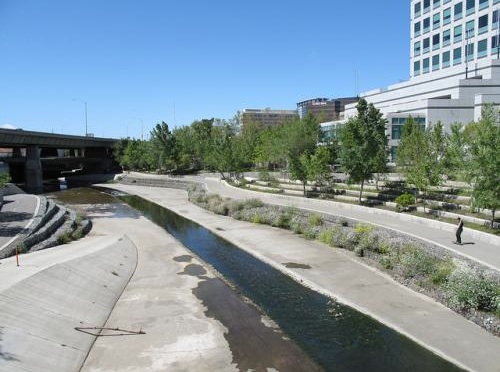What's the role of urban planning, a profession so invested in the physical world, within a culture fueled by ideas, concepts and dreams? You might think physical placemaking isn't a priority in San Jose, the self-proclaimed capital of Silicon Valley, and home or hub to the world's "digerati." But the stuff of great urbanism"”wide sidewalks, pristine open spaces, a mix of new and historic architecture"”is there. It's even there in a way it sometimes isn't in San Francisco. This occurred to me while wandering through downtown San Jose and passing tree after (perfectly-pruned) tree. Sidewalk extensions in front of restaurants? Up north these can cause an uproar. In San Jose, they're no big deal.
Planners in San Jose are focused on what it should be. Naturally, they look to other great cities, eagerly seeking lessons for how to create their very own Central or Millennium Park, replicate the cultural vibrancy of Haight Street or mimic the economic successes of other parts of Silicon Valley. The city has aspirations to improve and change, but too much learning could lead to an identity crisis at the expense of appreciating the important things it already has under its belt.
What stands out in my mind is a spirit of innovation and willingness to improve that can be hard to come by in San Francisco. In San Jose, change is good and "business" isn't a dirty word. Spearheaded by a cultural organization called 1stAct Silicon Valley, the planning initiatives for revitalizing the SoFA district blend a focus on the arts with technology and student programs at nearby San Jose State University. The Guadalupe River Park, an already-impressive stretch of downtown open space, is undergoing yet another phase of development to incorporate outdoor performance spaces and family nature trails.
All this, plus political will and a Mediterranean climate to boot. Some of the things San Jose wants from us, I want from San Jose.

1. In the heart of downtown, a river runs through it. An improbably beautiful 2.8-mile stretch of nature between Highways 280 and 880 includes places for gathering (a meadow, community garden, plazas and monuments) and recreation (continuous pathways lined by native greenery and tiered landscaping). The park hosts large community events, including the city's Pride Celebration and AIDS Walk. Here, a lone skateboarder provides a program of his own.
2. Holding the line. Blocks of mid-rise developments are punctuated by buildings that rise to (not above) the hill-line. Historic buildings, like the Cathedral Basilica Saint Joseph and De Anza Hotel, are tucked away in a fabric of old and new. An urban growth boundary was drawn in the 1970s "” and held in the 1990s despite unprecedented population growth "” to preserve nearby farmland and drive development into the city proper. Some have lauded the City for maintaining the boundary; others have criticized it for driving up the cost of housing.
3. In downtown, seating to spare. On a weekday, these benches look lonely. Street trees and planters are expertly maintained, even protected by a circular guard that could double as something to lean on. Seating is shaded from the South Bay sun (usually not a problem up north), and actually designed for sitting comfortably (not a given, sadly, when it comes to park benches). But where are the lingerers, the lunchmates, the people to see and be seen? "We're workaholics down here," replied one passerby.
4. South of First, the bones of a great retail street. On SoFA's main drag, South First Street, new initiatives build on the bones of a great retail street. In April 1927, Hollywood starlets filled the California Theater's 1,119 seats to celebrate the opening of the South Bay motion-picture house (left). Today, it is home to the San Jose Opera and Silicon Valley Symphony. Similar to San Francisco's "parklets," extensions to SoFA's already-generous sidewalks facilitate outdoor eating and people-watching (right).
5. Subtly artful parking, across from Diridon Station. Surface parking lots can be an eyesore, deadening everything around it. But sometimes the investment in flashy "park-itechture" can be compensatory. This layered wall creates depth and visual interest without trying too hard, and incorporates tufts of greenery to soften the surface.
Photo Credit: All photos by author
